Safeguarding Blog
Online Safety Facts…or Fallacies?
I recently gave a talk on ten online safety axioms which might not be as effective as we think for keeping children safe. As it seemed to pique some interest, here’s a quick blog version. You will disagree with some; they are supposed to be provocative and make you ‘stop and think’ (see #1 for why that’s ironic).
It’s important to note that there is some truth in all ten statements, but the ‘problem’ is that they represent potentially dangerous simplifications of complex concepts. When we address the same issues with adults, we say it’s too difficult to boil down to a pithy rule, but when it comes to educating children, often we do exactly that. This blog doesn’t give many answers, but lots of questions to think about.

First though, it’s important to know what we mean when we talk about staying safe online. Here are six versions of ‘safe’ – how many more can you think of, and which one(s) are we trying to achieve?
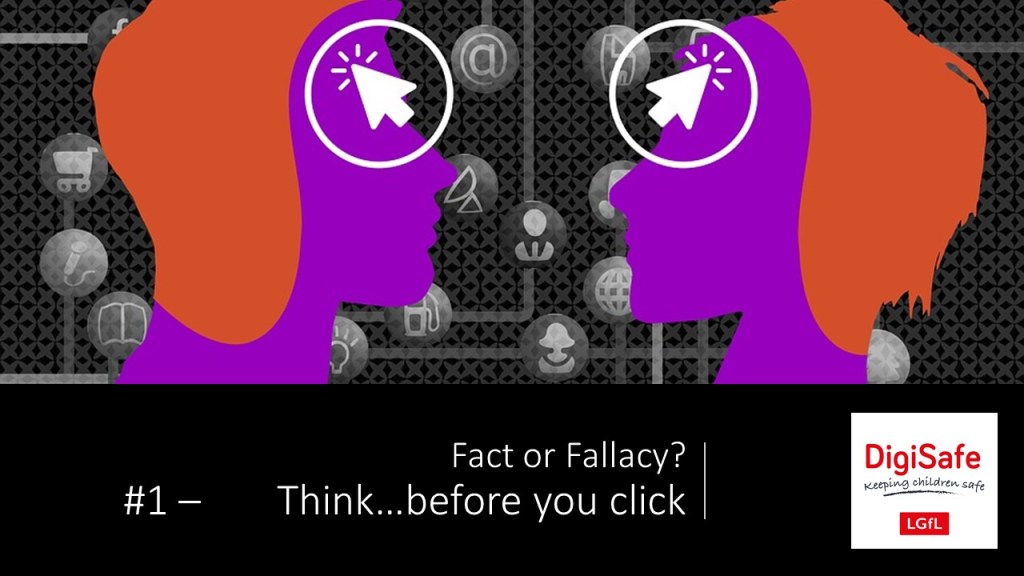
Here’s #1 – a sentence that anyone who has ever given an online-safety talk has probably used (yes, including me; yes, you will find the phrase in our resources now and again; no, I haven’t got an easy alternative – that’s the point). Critical thinking is such an important skill, but it can’t be taught by learning the phrase above. ‘Think’ what? If a teen is about to send a nude image to a boyfriend/girlfriend, the answer to “Do I want to send this?” or “Do I want the other person to see it?” might be “YEEEES”. There is often lots of thinking before clicking, but it doesn’t necessarily lead to wise choices.**
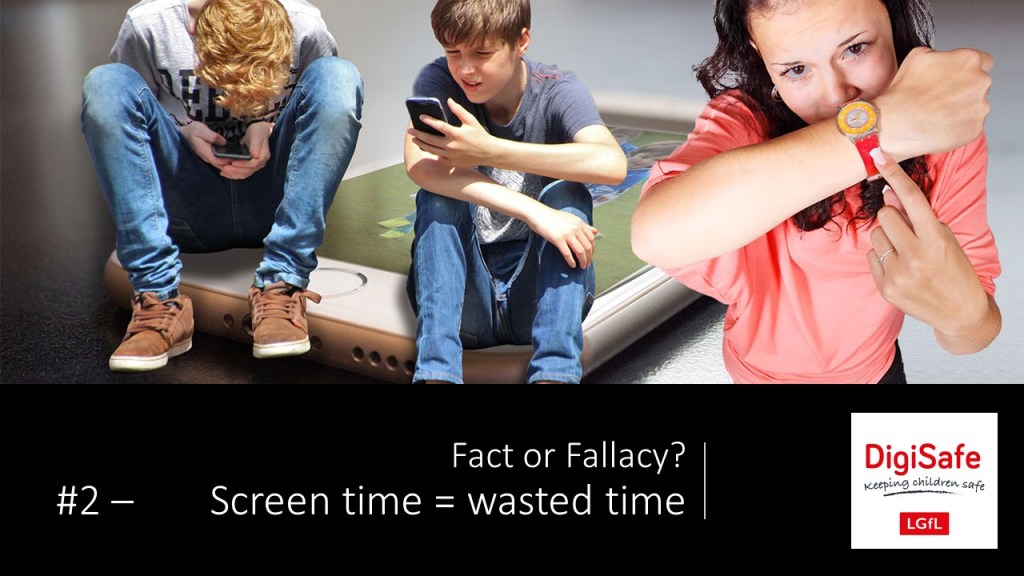
As with all of these points, you could easily get a blog out of this one (hold on, I did! It’s here). Parents often worry about screen time, and often with good reason…but not always. We don’t talk about food time, we talk about healthy diets; not how long you eat, but how and what. In the same way, time on a screen isn’t time on a screen: are two hours scrolling through other people’s lives on social media the same as a video call with Grandma, research for homework, a times-table game and reading an ebook? Let’s not perpetuate an unhelpful simplification. Check out the blog for more, and screentime.lgfl.net for some handy handouts and guidance (Digital Five a Day, for example).
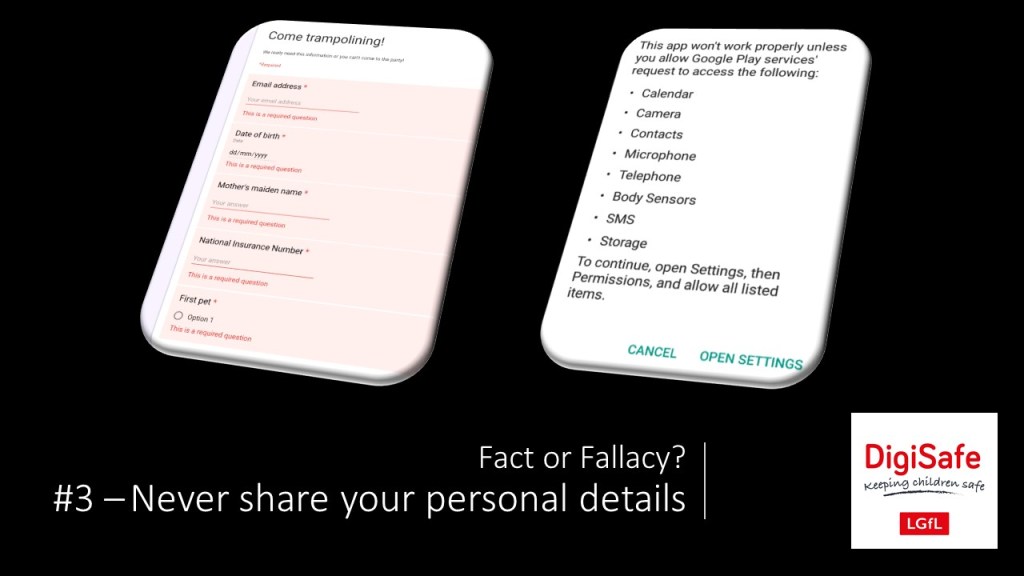
No, I haven’t gone mad. Of course it’s good advice (ish), but is it even possible? Look at the screenshots above? As adults we might see a form that asks for too much information but shrug our shoulders and do it anyway. We might see a list of permissions that are unnecessary, but because “I neeeeeed that app,” we install it anyway. Why should children be more grown up about it than we are? Oh, and we haven’t even covered the fact that your Amazon parcel probably won’t turn up if you don’t give your name and home address, and if you lie about your age and give a false name, many social media providers will delete your account. So maybe not such a handy one-liner after all…
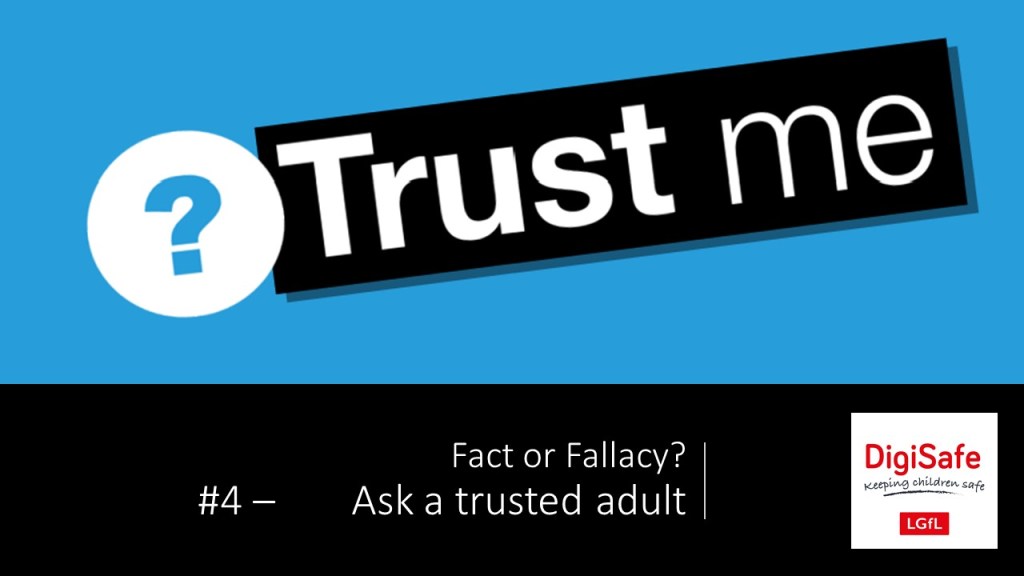
Yes I have used this phrase, and no I can’t think of an alternative expression. This is a great challenge for those of us who create materials for schools. Apologies to those teachers who take a resource but then need to spend half an hour talking about what a trusted adult is. Given that most abusers are known by a child and therefore within the ‘circle of trust’, this is such a key concept. And what about when today’s trusted adult becomes tomorrow’s abuser? It’s no wonder we reach for a handy turn of phrase to sum it up, but it’s never that simple. As ever, critical thinking is…critical (have a look at the Trust Me resource). There’s no easy answer and we need to keep encouraging reporting, but perhaps with more of a focus on telling when something doesn’t feel right (for primary, try video 1 of Jessie & Friends – it’s brilliant). It might not be pleasant, but we may also need to spend more time telling children that sometimes good people do bad things.
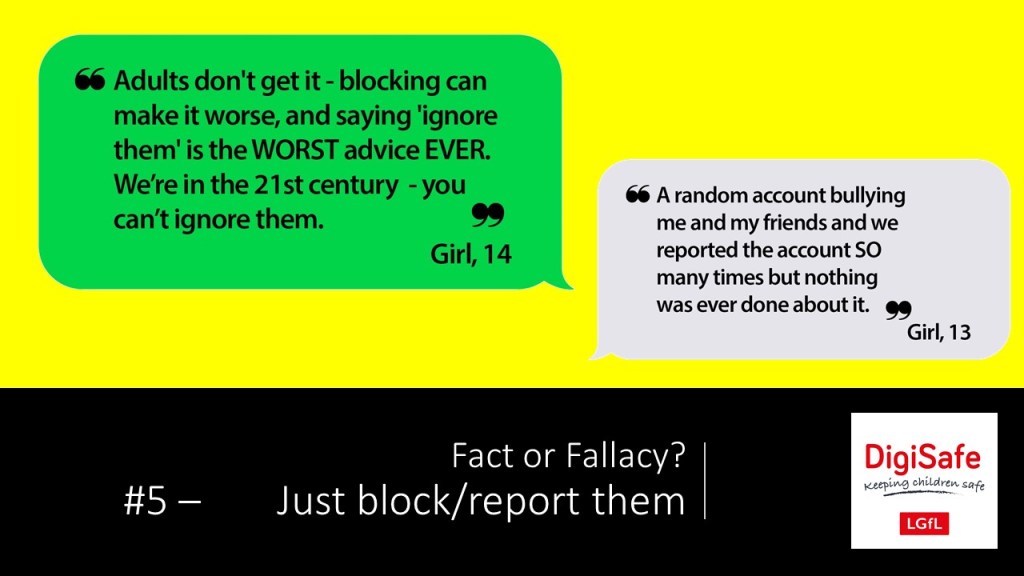
This graphic speaks for itself. The quotes, which come from our online behaviour survey of 40,000 pupils Hopes & Streams, illustrate why this advice might be helpful as part of a wider strategy, but certainly shouldn’t have the word ‘just’ at the start; there is so much more to consider. As with #3 about sharing personal details, this may be a good example of asking children to be digitally resilient where actually we shouldn’t. Instead, we should be protecting them and offering an alternative (or telling industry to do so, which is exactly what the government is working on at the moment with the Online Harms White Paper).

The quote above came from a focus group we carried out with a group of Year 8 students at a London secondary school. It highlights just how careful we need to be when ‘delivering’ online safety education. The pupils we spoke to could eloquently describe some of the classic rules we are talking about in this blog, and what to do in certain situations. But when the border between online and offline only exists in a lesson, is the theoretical conversation we have with them any use in a situation they don’t even see as online? After all, safeguarding is safeguarding (online and off), safety is safety (ditto), and behaviour is behaviour (ditto ditto).
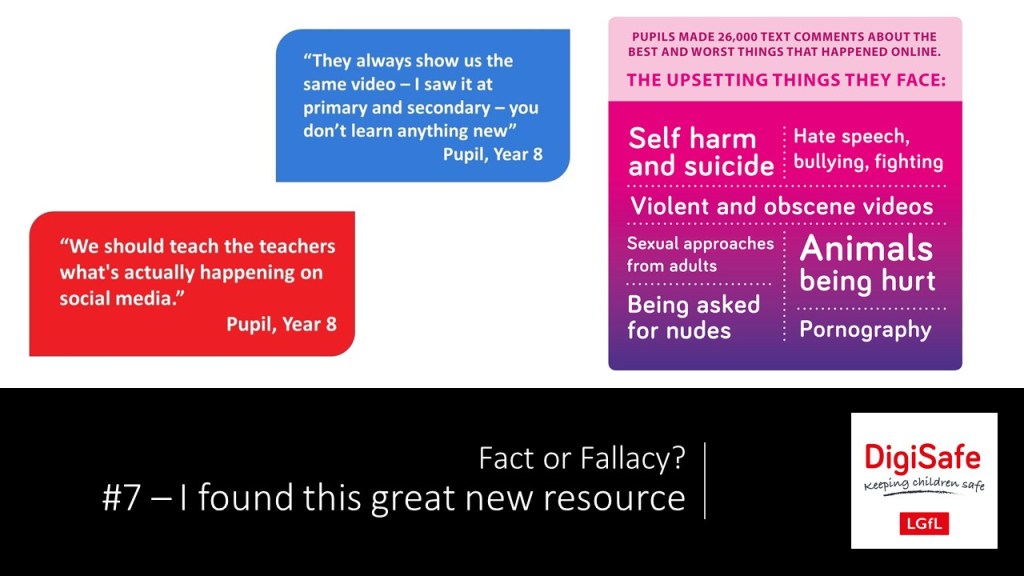
Here’s another one which is challenging for providers of online safety resources, not just for teachers at the coalface. On the one hand, just because a resource is brilliant, it doesn’t mean it will be when you endure it for the fifth consecutive year. So teachers be careful, but also let us (and all the other amazing providers of materials for schools) know what areas need more coverage, and we’ll get cracking! But at the same time, we need to address the issues that upset children: many of the topics on the infographic above from our survey might be obvious to children, but not all. No adult guessed that videos being shared of animals being hurt would be one of the things that complained about most. Are we asking them and meeting their needs?
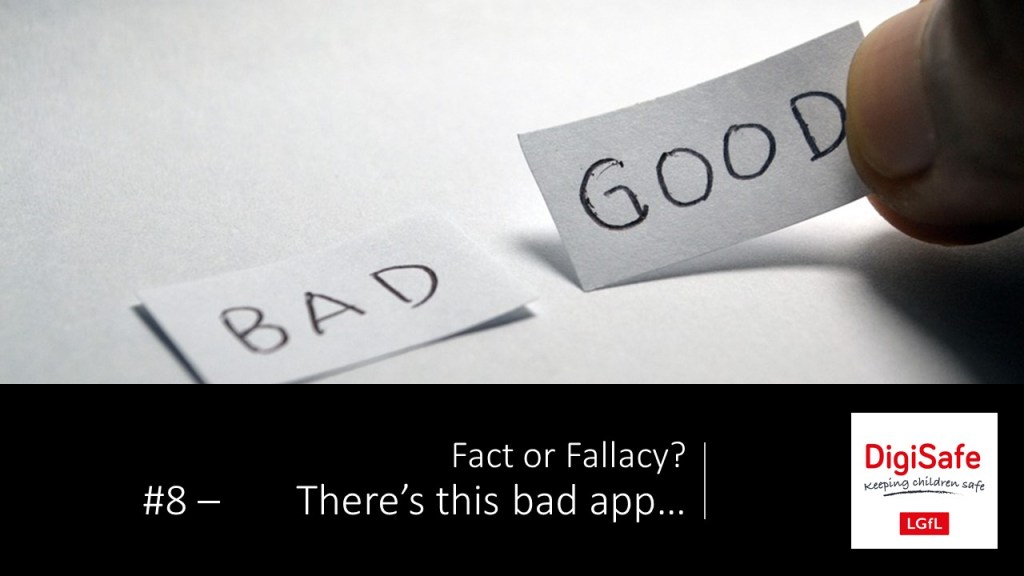
It is quite understandable why you would give into the temptation to give parents the list of ‘bad apps’ that they often ask for. And it’s understandable why they ask for one. But it’s not a good idea. We wrote a Scare vs Prepare blog on the topic a while ago (read it here; it also includes a video explainer), but in a nutshell, it can create a false sense of security and unnecessary panic, and when there is something really ghastly out there, warnings provide free publicity and generate intrigue. Is the answer to say nothing? No, but to warn about behaviours and risks where necessary, because they can apply on all manner of apps. And just like people, bad things happen on good apps.
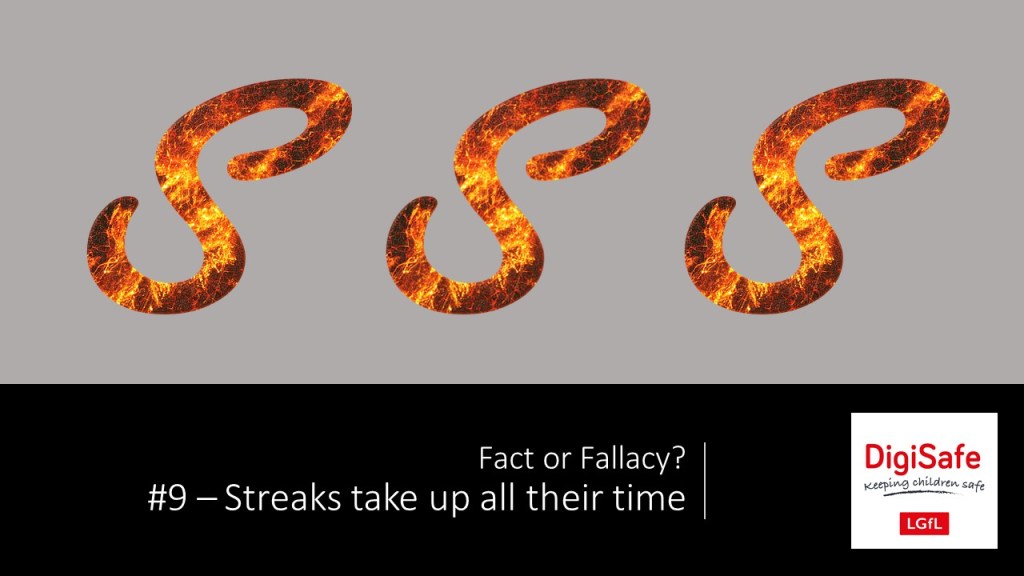
Adults never fritter away time scrolling through cat gifs and end up missing a deadline as a result. Or do they? It’s important to give credit where credit is due: whilst we do need to help children and young people manage their time, and any parent knows from ‘the homework conversation’ how stressful this is, let’s keep talking to them about it but also listen and learn how they manage, and give help where it’s needed. Think that sounds crazy? Then read here about how Snapchatters deal with maintaining a 500-day 75-friend streak record when they need to get out the house, or what they do when it’s exam time. We will always need to play the annoying adult role, but a little more insight may lead to more effective haranguing.

The amazing Professor Sonia Livingstone from the London School of Economics has spent ten years debunking the term digital native and has written a lot about the term and the concept (she suggests naïve expert is preferable). But the three statistics above from our survey illustrate our final fallacy (surely no question mark needed on this one?) rather well in the words of young people. Not enough children tell anybody about bad stuff online, but when they do, they often choose to tell parent. After all, even though not many have ‘that conversation’ regularly, three quarters of children trust what their parents have to say (naturally only when they want to hear an opinion!). And why is that? Because they recognise that it’s not about the app; it’s about the behaviour! So when we facilitate the myth that anyone is ‘too old to get it’, we are doing ourselves, and our children, a major disservice.
So there we have it – my top ten fallacies, which are of course mainly ‘over simplifications of complex issues with a sprinkling of fact’. But that doesn’t make for quite such a good blog title. Let us know what you think, and which ones have I missed? Tweet us at @LGfLDigiSafe
** Please note that to keep this blog shorter than War & Peace, I can only scratch the surface of each point here so some arguments may appear flaky. I could say much more, and am happy to tell you more on the subject, but why not let them marinade in your mind for a while – you may be surprised what you think in a couple of weeks’ time.

